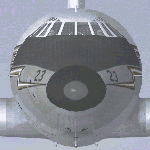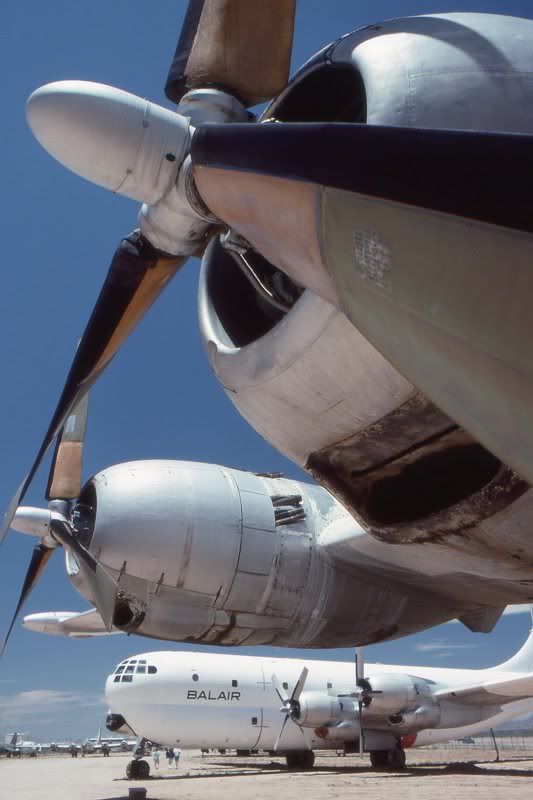60 years ago today
Moderators: Guru's, The Ministry
Re: 60 years ago today
I'll raise a glass to that, especially as Comets are what I'm currently flying on my computer. Also in memory of those who lost their lives and the team that discovered the cause, to the benefit of all jet airliners, crews and passengers thereafter. Thanks for the reminder.
David
David
Re: 60 years ago today
It's ironic - We gave away all our aeronautical knowledge, it's just that the fatigue problem was not exactly planned to have been discovered, let-alone passed on. Although Boeing, Douglas etc said they'd have been just as blind to it as we were.
Just think what might have been had the disasters not occurred...might the type have been a world beater or would US domination have been inevitable?
Even if the Comet 4 sold very well, it would soon have been overtaken by the Boeing 707 which was considerably bigger and the design that set the standard. The aborted Vickers VC7 could well have been a match for the 707 though...but that's another story...
Just think what might have been had the disasters not occurred...might the type have been a world beater or would US domination have been inevitable?
Even if the Comet 4 sold very well, it would soon have been overtaken by the Boeing 707 which was considerably bigger and the design that set the standard. The aborted Vickers VC7 could well have been a match for the 707 though...but that's another story...

Re: 60 years ago today
I think US domination was inevitable - we just couldn't turn out a/c fast enough. As you may recall TWA were going the buy the Britannia - until they were told the planned production rate
Paul
Paul
If God had meant us to fly, he would have given us tickets.
- Garry Russell
- The Ministry
- Posts: 27180
- Joined: 29 Jan 2005, 00:53
- Location: On the other side of the wall
Re: 60 years ago today
Another was a large order from SAS for the Viscount, but they couldn't wait two years for the first.
They bought Convairs and other assorted US types instead
They bought Convairs and other assorted US types instead
Garry

"In the world of virtual reality things are not always what they seem."

"In the world of virtual reality things are not always what they seem."
-
Dev One
- Vintage Pair

- Posts: 2576
- Joined: 10 Jul 2009, 08:33
- Location: Chacombe about 2 mile east of M40 J11
Re: 60 years ago today
And no one believed Neville Shute Norway?
Keith
Keith
Re: 60 years ago today
Must be referring to Theodore Honey in 'No Highway'.That was the first novel that I ever read.Somewhat ahead of its time.And no one believed Neville Shute Norway?
Now at the age where I know I like girls but can't remember why!
Re: 60 years ago today
In a period of post-War austerity, Britain decided that any new airliners must be able to operate from existing airports without changes to infrastructure. They would have to take off from short runways and mix comfortably with slower traffic on approach. These requirements affected both the de Havilland Comet and the still-born Avro Canada C102.Chris558 wrote:Just think what might have been had the disasters not occurred...might the type have been a world beater or would US domination have been inevitable?
This endowed the Comet with some unique abilities that endeared it to Dan Air and the RAF, but the insistence on low speed handling resulted in a relatively modest wing-sweep of 20º, limiting its speed to 500 mph (TAS), which compromised the efficiency of its turbojet engines. In fact Britain had underestimated the World's enthusiasm for jet travel, or that airports would fall over themselves to join the jet age.
All the jet airliners that followed were designed after the Comet's first flight, and the American manufacturers only put pen to paper after the Comet had entered commercial service. This enabled them to make more informed decisions. Boeing, in particular, were confident that airports would extend runways. This enabled them to design for maximum cruise efficiency, with a 35º swept wing and a speed of 600 mph.
Size, as you point out, was another issue. The penalty of being so early was that centrifugal jet engines were relatively feeble. Calculations of thrust vs drag meant that the total cross sectional area had a limit, which is why the engines had to be in the stub wing and the fuselage diameter was limited to 10'3". The P&W JT3 had twice as much power as the Ghost 50, which gave Boeing more elbow room — literally.
What might the Comet have been without the tragedies?
de Havilland had a six-year head-start in which to achieve World domination. Early indications, from BOAC's report on the first full year of operations, and orderes flooding in were impressive — including Pan Am. It seemed de Havilland were on the right track.
Would a fault-free Comet have remained dominant in the 1960s?
No. It was handicapped on speed and range. There would have been a lot of Comets about, of course, and they might have continued on major routes to the mid-1960s, as they did with BOAC. Before that, the company would have had to develop an all-new Comet to meet the Boeing 707 head-on. Given the poor quality of decision making by Britain in those decades, the continued obsession with short-runway capability on "Empire Routes", even with the VC-10, and the appalling lack of foresight of BEA and the Trident 1 vs Airco 121, or Trident 3 vs HS-134, one has to conclude that we would not have equipped ourselves well enough to do compete with America.
Guy Montagu-Pollock
http://www.dh-aircraft.co.uk
http://www.dh-aircraft.co.uk
Re: 60 years ago today
It wasn't quite as simple as in "No Highway". Fatigue was known about, but not properly understood. There was already a suspicion that the existing certification requirements were not sufficient, and that the greatest risk came from cabin pressurisation at high altitude. For example, the British Ministry of Supply required that aircraft hulls were designed to twice operating pressure (2P) and tested to 1.33P. For the Comet, de Havilland decided to design to 2.5P and test to a minimum of 2P. The infamous windows were tested to 100 PSI without failure. At the same time, de Havilland worked closely with the Royal Aircraft Establishment (RAE) on up-to-date certification requirements, which changed throughout the Comet's development.Dev One wrote:And no one believed Neville Shute Norway?
Keith
There was a mistake. The Comet used revolutionary construction techniques as well as a new type of propulsion. They used structural adhesives, which were stronger, lighter and spread loads over a wider area, reducing localised stress. The production director, Harry Povey, who had been masterful with the Mosquito and Vampire, could not find a way to bond the openings for the windows and the ADF antennae successfully. He requested that they used traditional rivets instead. It is from these rivet holes that the cracks emanated.
Anyway, the hull was not strong enough. When tragedy struck, de Havilland were shocked because the aircraft had endured far fewer pressure cycles than components they had tested at the factory. They had put centre fuselage assemblies, complete with wings, into water tanks and pressurised them for certification, then subjected them to repeated cycle tests, and they had demonstrated more than adequate service life. Prototype Comets had also been through certification, followed by three years of flight testing and route proving. If any hull had failed, it should have been one of those. What the blazes was going on?
During the subsequent inquiry, brand new aircraft were tested to destruction. They failed in the same way as "Yoke Peter", and after the approximately the same number of cycles. Sir Arnold Hall, Director of the RAE, concluded that, by carrying out certification tests to high pressure first, the nature of the material had changed, making it more resistant to fatigue. It was a bombshell. Every calculation, every assumption, every projected figure about the Comet's strength was wrong.
de Havilland could not be blamed, because it was a global lack of understanding. They had been rigorous in their testing, and the outcome was not reasonably forseeable, given the scientific knowledge at the time. From that moment everything changed: the way aircraft were constructed, they way they were tested, certification — everything.
It's also interesting to note that tank testing to higher than operating pressure became part of the manufacturing process, as a way to combat fatigue — starting with the Comet 4.
Guy Montagu-Pollock
http://www.dh-aircraft.co.uk
http://www.dh-aircraft.co.uk








